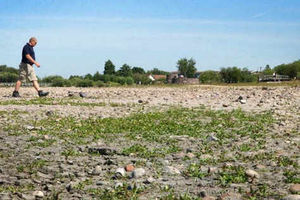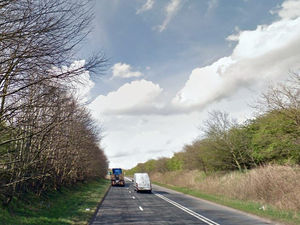Danger warning over Chasewater 'quicksand'
The multi-million pound draining of a Staffordshire reservoir is posing a major danger as people are risking walking across large areas of dangerous exposed deep mud.

The multi-million pound draining of a Staffordshire reservoir is posing a major danger as people are risking walking across large areas of dangerous exposed deep mud.
A horse had to be rescued recently after its rider tried to cross the Chasewater Reservoir bed on horseback resulting in it getting stuck in the mud which is acting like hazardous quicksand.
Bosses at Lichfield District Council are now urging people to take extra care over the summer while the work is carried out and have issued safety advice.
They have put up signs around the reservoir warning people of the dangers but some people are ignoring them.
Councillor Val Richards, Lichfield District Council's cabinet member for leisure services, said: "Lowering the water has exposed large areas of deep mud.
"The mud can act like quicksand, and anyone walking over it could easily sink and become trapped.
"We have put up warning signs around Chasewater Reservoir to highlight the dangers. However, some people have been ignoring the warnings.
"This is why I am once again stressing how important it is that visitors to Chasewater follow our advice and stay away from the reservoir bed. We would also urge parents to explain the dangers to their children and to tell them to keep away from the mud."
While the works take place visitors are asked to stay on marked footpaths and make sure dogs are kept on a lead.
Major repair work costing around £4.5 million is being carried out on the dam.
In preparation of the works, one billion gallons of water has been drained out of the reservoir.
A crisis report released by the council in January warned that water was seeping through the main 560-metre eastern dam, which has no waterproofing.
The report stated that urgent and extensive repairs were needed, and that dam failure could ultimately wipe out 2,000 people's homes and kill 80 people in a catastrophe causing £105 million damage.





